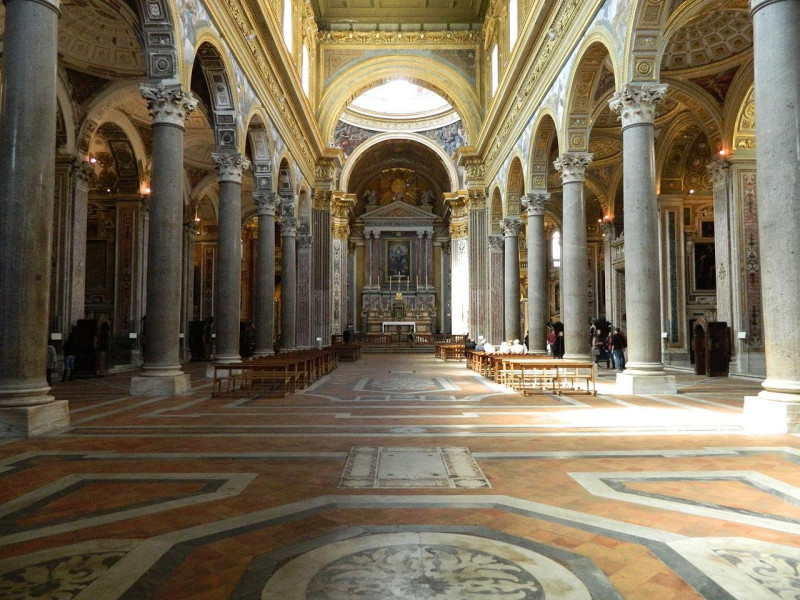Complesso Monumentale dei Girolamini
The decoration in gold, marble and mother of pearl of the Girolamini's Church earned it the title of "Domus aurea". Its interior has a concentration of works by great artists from Naples, Tuscany, Emilia and Roma who make it, along with the adjoining Convent, one of the most important monuments of the city. The entire building is made only by the Church, even a prestigious Picture Gallery (the first public picture gallery of Naples), a rich Library (the oldest public library in Naples, second in Italy), two monumental Cloisters and the Oratory of Assumption (also called "of the Artists"). The Monumental Complex was declared "National Monument" in 1866. It was founded in 1586, when they settled in the city religious known by the name of Girolamini. Initially it made up of a church smaller than the current and an adjoining convent, it was enlarged in the sixteenth century, designed by the Florentine Giovanni Antonio Dosio in architectural forms inspired by Brunelleschi. Between the seventeenth and eighteenth centuries the Church was enriched with works of art by the late Mannerist authors of the Roman school and, in the same century, the side chapels, whose decorations worked sculptors by Pietro Bernini, Jacopo Lazzari and Sammartino. Date back to 1780 the reconstruction works of the exterior facade, designed by Ferdinando Fuga. The main facade has two orders delimited by an entablature: in the lower part there are three portals, the main group of sculptures by Giuseppe Sammartino depicts Moses and Aaron with the Tablets of the commandments; the top is lightened by a rectangular window topped by a pediment. The dome was built in the seventeenth century by Dionisio Lazzari, then demolished and rebuilt in the nineteenth century. The interior has a Latin cross divided into three naves by twelve granite columns of Giglio Isle. The Sanctuary is surrounded by a marble balustrade and in the apse, a rectangular plant, is placed the painting by Giovanni Bernardino Azzolino depicting the Madonna della Vallicella and All Saints. Along the colonnade, you see a plaque in memory of Giambattista Vico, underground buried under the St. Agn's Chapel. The side chapels are eleven, all decorated by artists of Tuscan, Emilian and Neapolitan extraction. The Sacristy has on its vault a remarkable seventeenth-century fresco depicting St. Filippo Neri, by Giovan Battista Beinaschi. Of particular value even the floor in marble inlay and walnut cabinets. Below the Sacristy develops the Crypt that, according to legend, served as alchemical laboratory at Prince Raimondo di Sangro. The Convent, which is developed adjacent to the Church, was built from 1587 and the first floor houses the Picture Gallery, with important works of the Neapolitan school (Battistello Caracciolo, Massimo Stanzione, Francesco Solimena, Jusepe de Ribera and Luca Giordano) and Central Italy (Guido Reni, Federico Zuccari, Sermoneta, Francesco Vanni, Francesco Curradi and Francesco Gessi).



